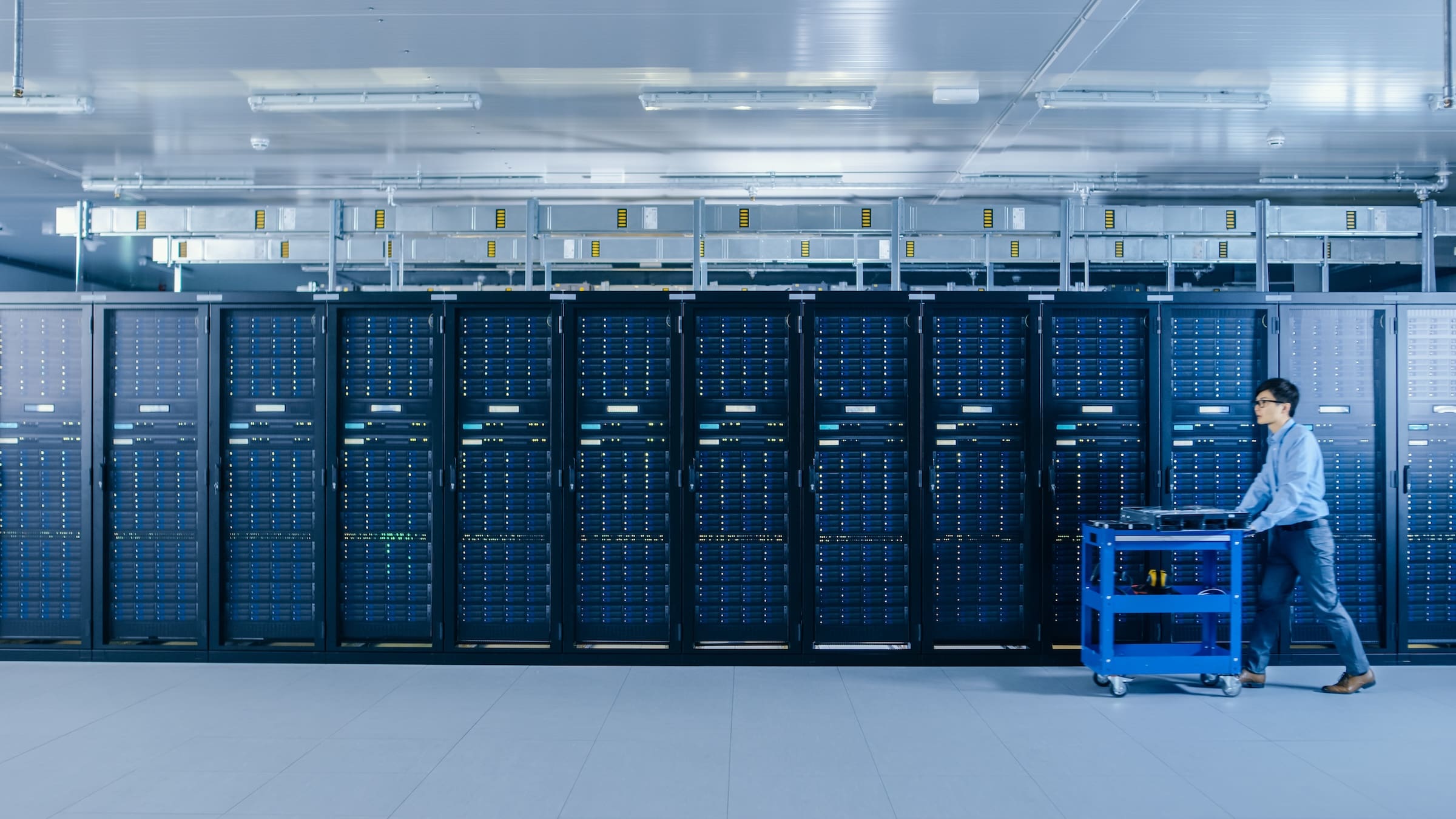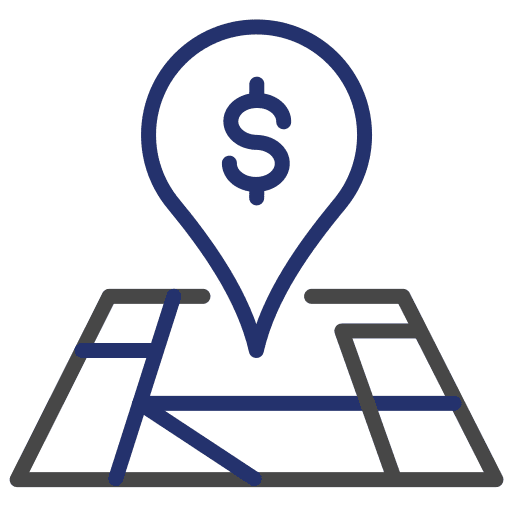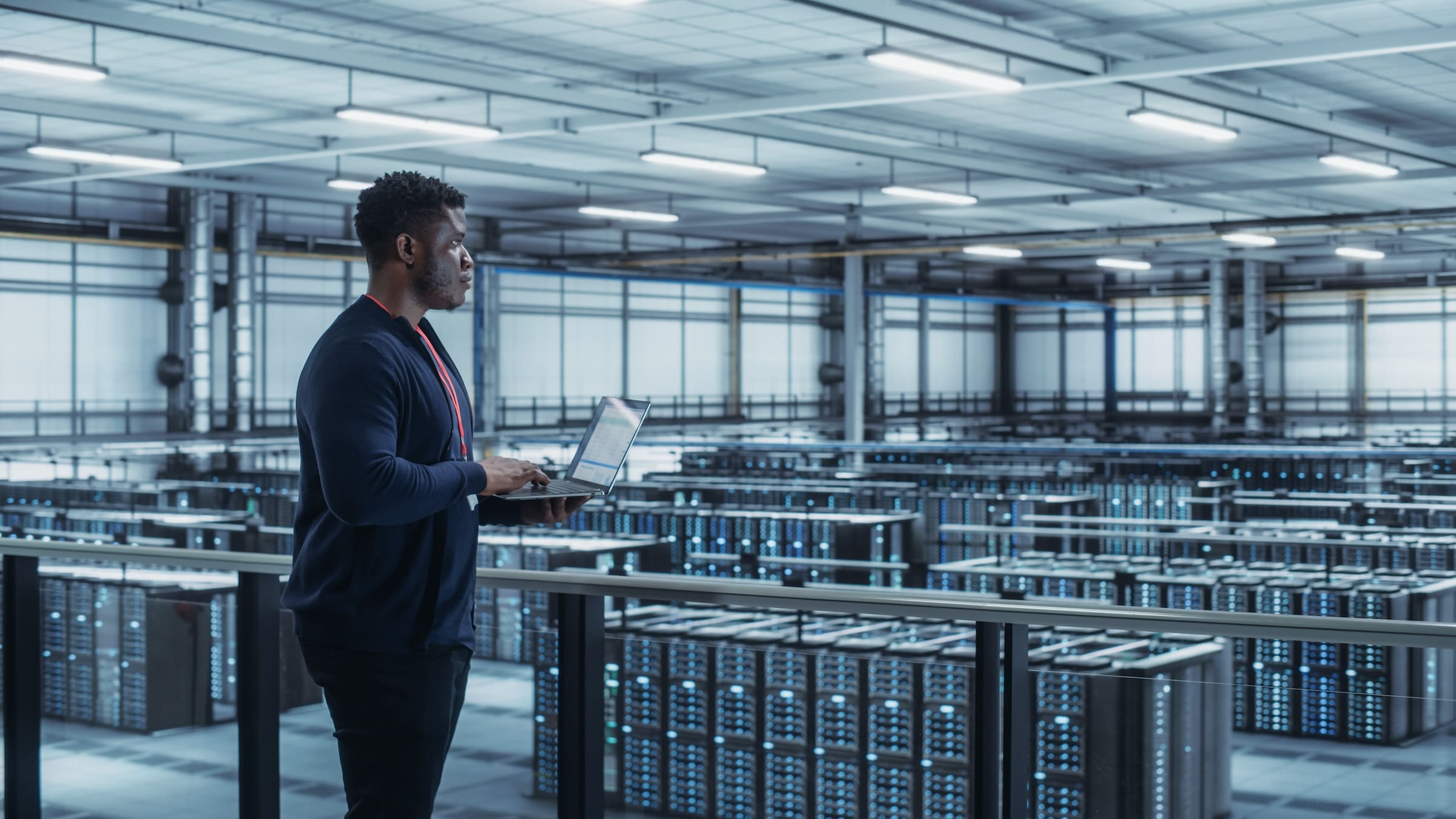Data Center Design—Three Key Considerations
Data centers are emerging as one of the most important types of industrial structures in the United States. These are “warehouses” dedicated to storing data rather than physical goods. And there are currently almost 3,000 of them in the U.S. alone.

A visitor to a typical data center would see row upon row of server racks, along with the switches, modems, routers, and precision air conditioning units that keep the data secure and allow it to be disseminated over the internet.
As the world moves inexorably toward an information economy, data centers will play an ever-larger role in the commercial life of every country—especially the U.S.
Here are three key considerations to keep in mind when designing and building a data center:
1.) Location
Since a data center deals with information that is transmitted electronically via the internet, location is not as critical as it is for other industrial facilities. But it is not irrelevant either.
One of the non-negotiable requirements for a data center is a cool environment. So, the regional climate must be considered in choosing a location. Air conditioning is available virtually everywhere in the U.S. nowadays, so a hot climate is not a dealbreaker. There are, after all, 282 data centers in Texas, 121 in hot and humid Florida, and 87 in blazing hot Arizona. But those hot regions will require considerably more energy to maintain the cool conditions data centers require. Energy costs can thus become a major operational expense.

Reliable electricity itself is another non-negotiable, so the cost of electricity in a locality must be taken into account. And electricity prices vary widely by state and region. For instance, in June 2024, the cost of industrial electricity in Nebraska was 9.66 cents per kilowatt hour, while in California it was 27.66 cents per kilowatt hour. And in remote Hawaii, a kilowatt hour of industrial power cost 37.30 cents.

Land prices are another key factor in choosing a location. In Virginia, considered the data center capital of the nation, an acre of land costs $22,896 on average. Meanwhile, in Oklahoma an acre can be bought for $8,558.
It’s no surprise that more companies are choosing to locate their data centers in Oklahoma and surrounding areas.

Physical proximity to customers is also a factor that many companies must consider. In an age of near-instant communication that may seem strange. But in many fields, latency, or the time required for data transmission, matters. When it’s not a critical factor in business activities, as in stock trading, it can be a matter of convenience—and not annoying customers by making them wait even a few seconds for communications.

2.) The Regulatory Landscape
Complying with regulatory requirements figures heavily in the construction costs of any building, and data centers are not exempt.
At the federal level, builders must comply with regulations from the Environmental Protection Agency (EPA), the Occupational Safety and Health Administration (OSHA), and the Equal Employment Opportunity Commission (EEOC), to name just three agencies. State and local jurisdictions also have their own versions of these agencies, and their own stringent construction regulations. Most immediately, builders must ensure that they are compliant with local zoning regulations for industrial structures. Violation of any of these regulations can be costly indeed. As burdensome as compliance may seem, it’s typically much cheaper than paying fines for noncompliance.
After construction is complete, data centers bear an additional regulatory burden, mainly having to do with data security and consumer privacy. The Federal Data Center Enhancement Act of 2023 established minimum standards for government data centers. Private entities share many of the security concerns behind this law, so its provisions should be of interest to all parties in this field.
Data centers can be subject to additional requirements depending on the industries they serve. Builders and project owners must thoroughly investigate federal requirements, as well as the regulations in the locality they’re considering, and factor those costs into their building and operational expenses.

3.) Scalability and Future Proofing
The demand for data processing and storage will only increase in the future. Beyond the sheer volume of data, the increasing prevalence of tools such as artificial intelligence (AI) will require more digital space than ever before. Edge computing aims to distribute computer services to multiple locations closer to end users. That means the demand for new data centers will continue to rise.
Wise builders will keep future growth in mind when creating their designs. By employing modular designs, they can incorporate future additions relatively easily. Beyond the buildings themselves, data centers should be built to accommodate additional servers and networking components.
According to a report by Grand View Research, construction of data centers is expected to increase at a compound annual growth rate of 7.6% between 2024 and 2030. For companies in the data storage and related fields—such as construction—the future is bullish indeed.


